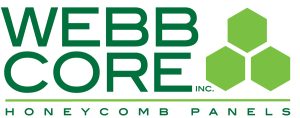Compliance is a cornerstone of cleanroom design and construction.
Cleanrooms are governed by numerous standards, including ISO 14644, GMP (Good Manufacturing Practice), and FDA regulations, each defining specific parameters for air quality, particle count, pressure differentials, and more. These standards dictate how cleanrooms should be designed, built, and operated. For example, the ISO 14644 standard, widely used across industries, classifies cleanrooms into different classes based on the maximum allowable number of airborne particles. This classification impacts design choices, such as airflow patterns, HVAC systems, and material selection. Non-compliance can lead to severe consequences, including costly downtime, product recalls, and even legal penalties. Thus, regulatory standards are not just guidelines—they shape every aspect of the cleanroom’s infrastructure.
Air quality is one of the most critical elements regulated by compliance standards. Proper airflow management is crucial in maintaining the required cleanliness level. To meet compliance, cleanrooms often use a combination of high-efficiency particulate air (HEPA) filters and unidirectional airflow systems to control the spread of contaminants. The design must account for factors like the number of personnel, equipment placement, and entry/exit points to ensure consistent airflow and prevent contamination. Incorporating these airflow considerations during the design phase is essential for achieving compliance and avoiding costly redesigns later on. Missteps in this area can result in turbulent air patterns that compromise cleanroom standards, leading to a failed certification.
Compliance also dictates the materials used in cleanroom construction. Walls, ceilings, and flooring must be made from non-shedding, easy-to-clean materials that resist microbial growth. Options such as coated aluminum panels or stainless steel are commonly used because they meet the requirements for durability, smooth surfaces, and ease of maintenance. Even small details like wall corners and joints are designed to minimize crevices where particles can accumulate. Selecting compliant materials is not just about meeting regulations; it also impacts the cleanroom’s performance and lifecycle. Non-compliant materials can introduce contaminants, jeopardizing both the certification and the overall cleanliness of the facility.
Another crucial element in cleanroom compliance is maintaining proper pressure differentials between rooms of varying cleanliness levels. Positive and negative pressure differentials help control airflow direction, preventing contaminants from migrating between areas. For instance, a pharmaceutical cleanroom may require positive pressure to keep contaminants out, while a hazardous materials lab may use negative pressure to contain contaminants within a specific space. The design and construction must integrate these pressure requirements through carefully placed airlocks, differential pressure monitors, and HVAC configurations to ensure compliance is maintained at all times.
Compliance is not just about the physical construction but also involves thorough documentation and validation. Cleanroom designs must be accompanied by detailed engineering plans, material certifications, and operational protocols. During construction, continuous monitoring and validation testing are required to confirm that the cleanroom meets the specified standards. This process includes particle count tests, airflow visualization, and pressure differential measurements. Without proper documentation and validation, even a well-designed cleanroom may fail compliance audits, resulting in operational disruptions and added expenses.
Compliance doesn’t end once the cleanroom is built. Ongoing maintenance is crucial to ensure the facility continues to meet regulatory standards. This includes regular inspections, re-validation, and adjustments to airflow systems as equipment or processes change. Planning for maintenance during the design phase—such as including accessible service panels and easily replaceable components—can significantly reduce downtime and keep the cleanroom compliant over the long term.
By adhering to compliance from the outset, companies can ensure that their cleanrooms not only meet industry standards but also support efficient, reliable operations for years to come. Compliance is not a one-time achievement but a continuous process that impacts every aspect of cleanroom design and construction. From material selection to airflow management and long-term maintenance, regulatory requirements shape the way cleanrooms are built and operated. Prioritizing compliance helps organizations maintain operational excellence and minimize risks associated with non-compliance.
Choosing a company like Webb Core, Inc. ensures that your cleanroom project is built to the highest standards of compliance and quality. With decades of experience and a reputation for quick lead times, precise manufacturing, and technical expertise, Webb Core not only understands the complexities of cleanroom regulations but also has the solutions to streamline the process. Their ability to provide fully compatible systems and on-site support makes them a reliable partner for achieving certification and maintaining long-term operational efficiency.


